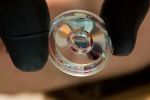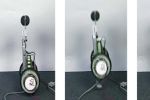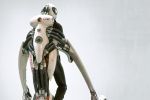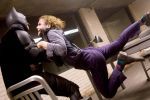Robotic Adventures at the FIRST Competition
Day One
It's Friday morning, March 6, not even eight a.m. High school students in color-coordinated outfits stand at ease under the high ceiling of the Javits Center, waiting for the New York City's FIRST Robotics Competition to begin. Over the next three days, sixty six teams will vie for the regional crown and spots in the national tournament, held in the Georgia Dome come April. Some of the schools have mascots. One team's red dragon boogies back and forth in front of another team's Darth Vader. Darth brandishes his light saber.
Founded in 1992, FIRST (For Inspiration and Recognition of Science and Technology) has grown from a single New Hampshire gymnasium to more than forty regional competitions. There are regionals all across the country (and another in Tel Aviv). FIRST has nearly 1,700 teams, some with as few as ten members and others with more than a hundred. A few mentors -- alums, teachers, or professional engineers -- advise each team. Months ago, each team received a package of basic parts and a rule booklet 130 pages thick. They then had six short weeks to design, build, test, and finally ship their robots.
The main hall of the Javits Center is airport-hangar huge. Rows and rows of bleachers flank what looks like a miniaturized hockey rink with slick white plastic instead of ice. Behind the rink hang an enormous video screen and a tall black curtain. Behind them, more than sixty robots, each ensconced in a big wooden crate. The "pit," as this area is called, feels oddly calm and empty. Two students from Long Island's Hauppauge High, Mike Morales and Nolan Conway, struggle to extricate their robot, but are eager to talk about it once they have.
It is three-tiered and about five feet tall, with clear plastic sides and black netting in back. Its robotic guts are on the first level, protected all the way around by a blue bumper. The second level is empty, and the top has a wide, winged piece of metal that can pop up and forward. They joined FIRST after several years in a battlebots league, tired of rebuilding their robot after every match. FIRST, says Conway, is "more nonviolent."
Every year, he continues, FIRST invents a new game. This year's is "Lunacy," a name meant to invoke both crazy fun and the moon. (The plastic playing field apparently simulates low gravity.) Each game includes six teams divided into two alliances. A team scores when it drops its "moon rocks" (slightly fuzzy orange and purple spheres) into another robot's trailer. Moon rocks are worth two points apiece. Teams send four human players to the field. The two "pilots" control their robot as it chases enemies around the rink, or "crater." The payload specialist lobs moon rocks at opposing trailers from the sidelines. The "commander" shouts orders at everybody else.
By now, everyone else has un-crated their robots, too, and the pit is getting crowded. There is a team of Brits with a big Union Jack and a cardboard box marked "rubbish." A group of Brazilians has papered its crate with Portuguese news stories (subject: them). Otherwise, the pit is full of teams from the tri-state area, all with terrific names: The Mechanical Marauders, Skillz Tech, G-House Pirates, Pope John Robotics, Robotic Plague, Saunders Droid Factory, and Nerds with Attitude. The Bronx High School of Science has two teams: the co-ed SciBorgs and all-girl Fe Maidens (a founding member was into heavy metal). Stuyvesant High School has painted its robot with evil-looking red eyes and sharp, red-tinted teeth. Another team, from Herbert H. Lehman high school, flies a banner with a motto out of an old B-movie: "It came from the Bronx!" Over the loudspeaker, a slow, matronly voice reminds everyone in the pit to please wear protective goggles.
Popular Tags
Regular Features
| regarding | user | just commented |
|---|---|---|
| Earth Hour Approaches | Ulyssus | I completely missed it |
| A Fashion Geek Release Party | Ulyssus | She's come up with some |
| Pole-Dancing Robots | We_Major | In class the other day we |
| Wacky Inventions Real and Imaginary | We_Major | I really don't think we need |
| Fashion Geek Release Party | We_Major | A lady came into work the |








